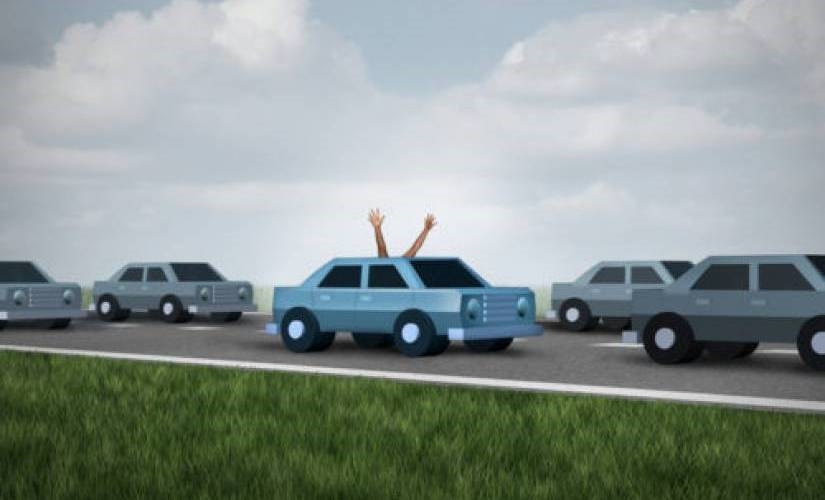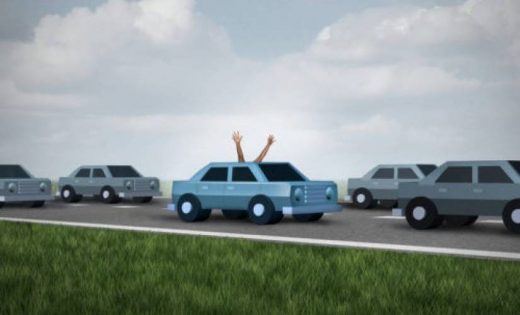Modern Auto Technologies Vital for Your On-Road Safety
Modern Auto Technologies Vital for Your On-Road Safety

Gone are the days when seat belts and airbags were considered the top safety features in a vehicle. The continuous work of the engineers has enabled them to design new and improved safety techs that can make our journeys significantly safer. With increasing traffic on the roads, there is no better time to take advantage of these auto technologies. So before buying your next ride, after getting the revs check report, make sure the vehicle contains most of these advanced features.
One of the coolest features on automobiles these days honor is Adaptive Cruise Control (ACC).
Depending on various Automakers, this system varies, but there is a similar sort of camera/radar in order to take in count the vehicles ahead of it. If you know the vehicle’s type and speed in front of you, it’s more convenient to adjust the speed. Regular cruise control helps to maintain a uniform velocity unless the driver starts to intervene. On the other hand, ACC offers a flexible mechanism to control the car’s speed after considering the speed of the car in front of it.
Here is a list of the top car technologies that can help you stay safe on the road, from reactive and responsive features to adaptive and automatic assist systems.
Please note, different automakers name these systems differently, so we will also give you the alternative names of these techs.
Modern Auto Technologies Vital for Your On-Road Safety
Adaptive Cruise Control and Adaptive Headlights
Adaptive Cruise Control (ACC) works to maintain a safe distance between your car and the vehicle ahead by automatically altering the speed of your car. You can configure the distance you want to keep between the vehicles; it could be one to two lengths or three to four lengths of cars.
The Adaptive Cruise Control With Stop And Go is an extension of this technology, which lets your vehicle run at a meager speed. In addition, the car can stop completely and start again, making it an ideal system for stop-and-go traffic. This system is also known as Adaptive Cruise Assist, Active Cruise Control, Smart Cruise Control, Intelligent Cruise Control, Smart Cruise Control, and Radar Cruise Control.
The Adaptive Headlights is a responsive tech created to aid in lighting the road ahead during turns. These are especially useful to increase nighttime visibility on curved roads. The lights follow the direction of the steering wheel or point where the wheels are. We also call it Dynamic Bending Lights and Active Bending Lights.
Another similar tech called Automatic High-beam Headlights mechanically shifts between the high- and low-beam lights as other cars draw near or in different light settings. So, for example, with a high-beam on when your vehicle senses an approaching vehicle, it will automatically change the high-beam to low-beam.
Wonder how the cruise control works?
In some scenarios, if the car comes suddenly into the passing lane from the inside lane. Then, you might see that the RAV will spike in the braking system. Moreover, when you are approaching a slow vehicle, you notice that your car slowly begins to reconcile with the car ahead of you. All these are because the computer system uses an algorithm that counts on the rate at which you are closing the car. In case the car ahead is faster, then it starts to neglect the effect. Indeed, the algorithm works similarly when you are pressing the brake pedal yourself.
Forward Collision Warning and Automatic Emergency Braking
Forward collision warning alongside automatic emergency braking is one of the prominent achievements in the field of safety and security. It has been a driving force for the Automobile to invest a large sum for research and innovation. It marks its beginning from the development of stability control. In fact, Jake Fischer, director of auto testing for consumers, summons this technology to be in place for all the vehicles as soon as it becomes possible for the manufacturers to realize its importance. Furthermore, he also claims that this feature could transform auto safety.
Forward Collision Warning (FCW), also known as Frontal Collision Warning, Forward Collision Alert, or Pre-Collision Assist, warns you when a collision is imminent. The warning comes through voice beeps and flashlights on the instrument cluster. Going through the working principle, it uses lasers, cameras, radars, or might be the combo of such techniques to scan the condition of the road ahead of your car and makes you alert in case that vehicle is moving slowly. The driver will be aware through haptic, visual, or audible systems.
An extension of the FCW is Automatic Emergency Braking (AEB), which controls its own hands when the crash is impending. When you fail to apply the brakes, the system does the job. Most AEB systems work when the car is in forward running mode; however, a few also come with the reverse braking mechanism. The AEB system may not avoid a crash, but it could definitely minimize its severity.
Some other common names for AEB are Collision Mitigation Braking System, Pre Sense City, City Collision Mitigation With Braking, City Safeguard, and Safeguard Plus.
Automatic emergency braking with pedestrian detection is another handy system that applies brakes when it detects a pedestrian. The system uses a combination of cameras and radar sensors to detect a passerby. Both the frontal and reverse braking systems are available, but most cars come with frontal pedestrian impact mitigation braking.
The car that also offers the Automatic Emergency Steering (AES) feature can even steer itself to avoid colliding with the pedestrian or any other object.
Lane Departure Warning, Lane Keep Assist, and Lane Centering
You know how important it is to keep the car in a lane; a slight steer can be disastrous. The Lane Departure Warning (LDW), also known as Lane-Departure Alert, helps you keep in your path by alerting you when you drift over the lane markings. Most systems give you an audible warning; however, some give you visual or tactile alerts, as well. Moreover, these systems also co-work with other technical features like an autonomous emergency braking system and adaptive cruise control.
The Lane-keeping Assist (LA) is a prevalent technology available in self-driving cars that can steer your vehicle back into its lane when it glides over lane markings. The system works with lane-departure warning, alerting you first before pulling you back in the lane. Automakers use different names for the LA, such as Road Departure Mitigation, LaneSense, Lane-Keeping System, Lane Assist, and Lane-Keeping Aid.
There is a provision for steering to keep the car in the correct position in the newer system, whereas the older system might use the phenomena of applying the brake to do so. So, yes, the amount of steering that requires nudging your car depends on the condition of the road.
Lane Centering, also called Lane-Keeping Assist, Lane Assist, Steering Assist, Lane-Following Assist, and Lane-Tracing Assist, thwarts your vehicle from gliding over the lane markings. Instead, it keeps your car in the center of lane marks. While Lane-keeping Assist is a reactive function that activates only when the vehicle starts drifting over the markings, Lane Centering is a proactive system. It means it makes sure your car always remains in the center of its lane.
Final Words
Besides these auto safety techs, Blind Spot Monitoring, Night Vision, and Surround View Camera are also very vital systems to ensure your security on the road. That said, you must always remember that these auto technologies are just for your assistance.
As a driver, you should be attentive and adopt defensive driving techniques all the time. For example, you should always drive within the speed limits, keep an eye on the rearview and side mirrors, and ensure you do not get distracted by anything in the vehicle or outside.
Image Credit: provided by the author and istock; thank you!
The post Modern Auto Technologies Vital for Your On-Road Safety appeared first on ReadWrite.
(25)


